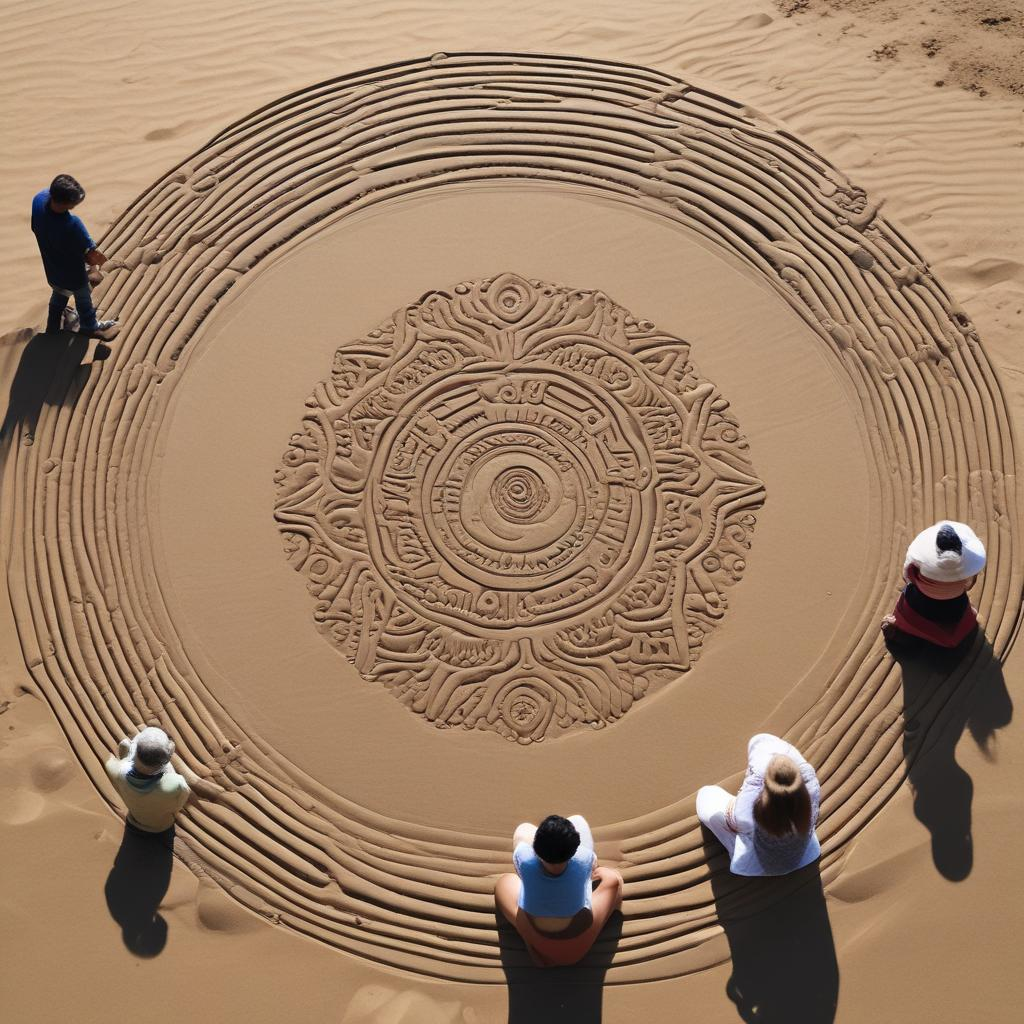The Symbolism and Spiritual Significance of Sand Art
Sand art, an ancient and intricate form of artistic expression, has profound symbolic and spiritual meanings across a variety of cultures around the world. From the Tibetan mandalas to Native American sandpainting, this art form is not simply about creating beautiful images from grains of sand but is deeply rooted in spiritual practice and symbolic communication. Below we explore some of the key aspects that highlight the symbolism and spiritual significance of sand art.

- Impermanence
In Tibetan Buddhism, monks create elaborate mandalas using colored sand, which are ritualistically destroyed once completed. This practice underscores the Buddhist belief in the impermanence of life. The process signifies that all material life, just like the intricate sand mandala, is transient and thus attachment to it leads to suffering. The destruction of the mandala serves as a poignant reminder of this reality, encouraging a focus on spiritual rather than material wealth.
- Healing and Purification
Among Native American tribes, particularly the Navajo, sandpainting is used as a part of healing ceremonies. The belief is that the sandpainting is a sacred space where the gods come down to heal the sick. By creating these sand artworks, they invite spiritual entities and powers to assist in healing processes, aiming to restore balance and harmony to the affected individual's spirit.
- Creation and Harmony
Sand art often symbolizes the act of creation. In many traditions, the patterns and symbols used in the sand reflect the cosmology and spiritual lore of the culture. These artworks operate as a microcosm, representing the larger universe and its underlying harmony. The precise and mindful techniques required to create sand art echo the attentive and harmonious balance needed in the cosmos, as well as in individual lives.
- Concentration and Meditation
The process of creating sand art requires deep concentration and a steady hand, making it a meditative practice in itself. The artists often enter a state of deep focus and mindfulness while arranging the sand, which can be a spiritual exercise. This meditative process is valued as a means of achieving inner peace, increasing mental discipline, and connecting more deeply with the divine.
- Communion and Community
In many cultures, creating sand art is a communal activity that strengthens the bonds within the community. It is often performed during significant religious festivals or communal events, fostering a sense of belonging and shared identity. The collective effort in creating and eventually dismantling the sand art reinforces communal ties and shared spiritual journey.
- Education and Transmission of Knowledge
Sand art serves as an educational tool in many spiritual traditions, where intricate designs are used to tell stories, convey spiritual knowledge, and pass on the teachings of the elders to the younger generation. Each symbol, color, and pattern has a specific meaning, and the art becomes a living text that offers learning and insight into the spiritual beliefs and practices of the community.
- Sacred Geometry
The designs used in sand art often involve complex geometric patterns that are symbolic of the universe and its properties. These designs are believed to hold spiritual significance, manifesting sacred geometry that aligns with the laws of physics and cosmology. By using sacred geometry, sand art connects both the spiritual and the physical world, making these creations a focal point for spiritual reflection and contemplation.
- Material Connection
The use of sand, a natural element, emphasizes a connection to the earth and physical environment. This connection is a crucial aspect of the spirituality in many indigenous and ancient religions, where the earth and nature constitute a central part of spiritual life. The tactile nature of sand art, engaging with elemental earth, serves to deepen this connection and respect for the natural world.
In conclusion, sand art is not merely an art form but a deeply spiritual and symbolic practice that provides insight into the values, beliefs, and traditions of various cultures. Through its emphasis on impermanance, healing, creation, harmony, meditation, community, education, sacred geometry, and material connection, sand art continues to be a powerful medium for spiritual expression and cultural continuity. By appreciating the depths of its significance, one can glean a better understanding of the cultures that practice this art and the profound insights it offers into the nature of existence and spirituality.


.jpg)





.jpg)



.png)
0 Comments